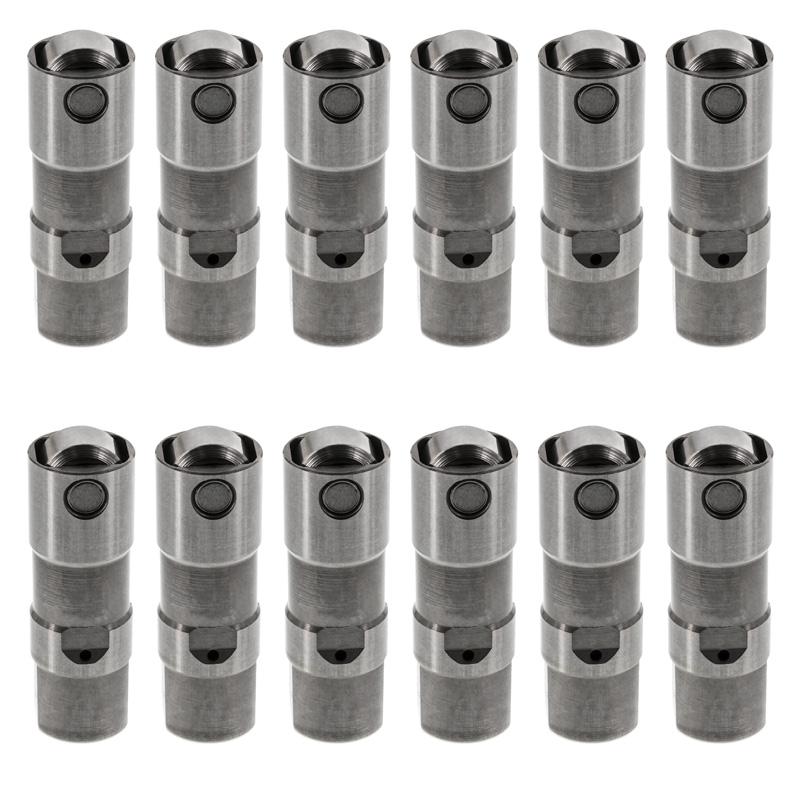After 2 years of severe testing in the LS market, we are releasing these in the 3800 market as our high performance lifter, superior to the common LS7 lifter that we also sell. We have had many customers tell us they work very well on stock engines, mildly modified engines, and most of all highly modified valve trains. Like with all valve train modifications different length push rods maybe needed. Measuring with a push rod length checker is always recommended. Externally they look just like an LS7 lifter.
This lifter is modeled after the Comp 875 lifter but it has more travel range for more installation flexibility. They give higher RPM power w/o the noise of other aftermarket lifters.
Below is a description between the differences of the standard Comp OE Lifter compared to the OE-R. This lifter is inbetween the two where you get the feel and sound of an OE lifter, but more of the performance of the OE-R lifter without the drawbacks of the OE-R. The OE lifter is slightly better than an OEM lifter.
OE lifters are a performance replacement for stock hydraulic roller lifters. Preload is meant to be setup similar to stock. Like stock, they are a ball valve style lifter.
OE-R lifters are specifically designed to perform at higher engine speeds. When engines are equipped with a hydraulic camshaft, high rpm is limited by the improper position of the internal piston as the lifter inevitably "pumps up". This improper location results in open valves and therefore leads to lost power. These lifters are almost required for any 3800 car shifting above 6000rpm because they help with the typical 5600rpm dip. OE-R lifters are preloaded and have to be installed between 3/8 and 3/4 turn (vs. 1/2 to 1.5 turns on stock lifters). These are a shim valved lifter like the ZZP and LS7 lifters. They have less range adjustment so preload is more difficult to setup. It's recommended to use a pushrod length checker.
When engines are equipped with a hydraulic camshaft, high rpm is limited by the improper position of the internal piston as the lifter inevitably "pumps up". This improper location results in open valves and therefore leads to lost power. These lifters are almost required for any 3800 car shifting above 6000rpm because they help with the typical 5600rpm dip. LS7 lifters are preloaded and have to be installed between 3/8 and 3/4 turn (vs. 1/2 to 1.5 turns on stock lifters) It's recommended to use a pushrod length checker.
How to determine proper push rod length by measuring "lifter preload":
All said and done you need to add up the changes in head milling, block decking, head gasket thickness, push rod length, valve tip height, camshaft base circle lobe diameter, and rocker arm type. This will allow you to calculate the length of push rod needed.
To check for lifter preload or lifter squish you need to first get to zero lash. Turn the engine over so that one valve on a cylinder is open. Because one is open, you know the other is closed, meaning the lifter is sitting on the base circle. With that lifter on the base circle loosen the rocker bolt and then retighten with one hand while spinning the pushrod with the other. This way you can tell when everything first makes contact (the valve is touching the rocker tip, the pushrod is touching the rocker & and lifter and the lifter is touching the cam). At this point of first contact you are at zero lash. Everything past this point is lifter preload. Continue to tighten the rocker bolt until the bolt hits its snug point. This is how much lifter preload you have. Each 1/2 turn of the rocker bolt is ~.050 of lifter preload. Your goal is to have between 1/2 turn and 1.5 turns if you have stock lifters or 3/8 turn to 1/2 turn if you have Comp lifters. As you can see the stockers have a lot more room for error.
If you have too much preload and you have exhausted the adjustment of the lifter, the valves will stay open and the car will not start due to lack of compression. If you have too little preload, the valve train will be noisy and you risk exploding a lifter and having a very costly repair.


